Stalin’s Record Player: The DP-27 Degtyaryov LMG
December 12th, 2023
8 minute read
In March 2022, just weeks after Russia launched its unprovoked invasion of Ukraine, images circulated across social media that showed some Ukrainian Territorial Defense Forces training with wooden facsimiles of the AK-47, while a video was shared to YouTube that highlighted how some of the volunteers were being trained to operate the DP-27 light machine gun. It was a weapon likely older than some of the grandparents of the trainees!
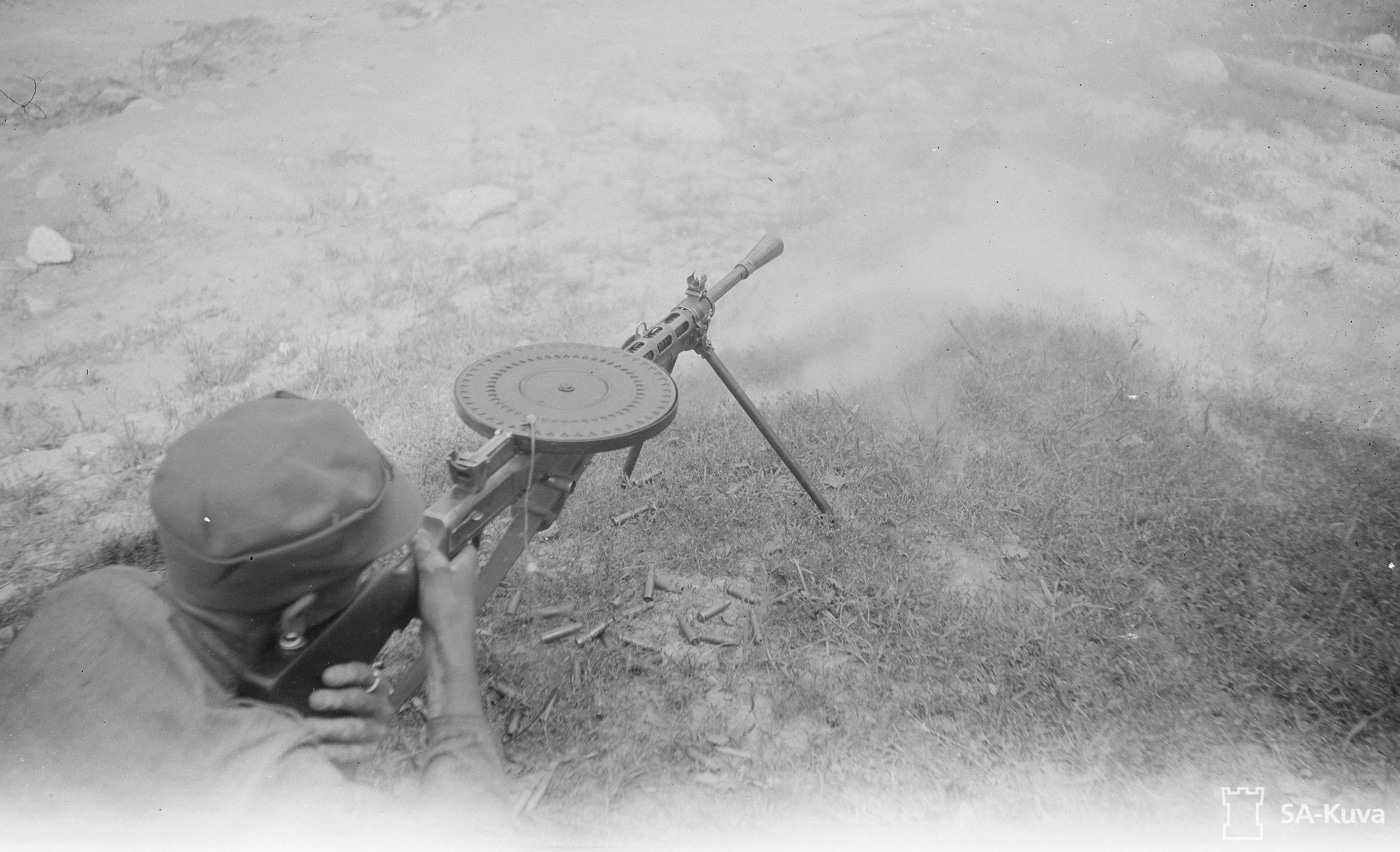
“In my opinion, there are no old machine guns at all,” Ivan Savelyev, the volunteer instructor, tells the trainees. “And the main tactical and technical characteristic of any weapon is the head of its owner and what is invested in this head.”
That light machine gun — also known in the West as the DP-28 — was developed in the late 1920s and saw service during the Second World War with the Soviet Red Army, while it was also employed by North Korean and Communist Chinese forces in the Korean War.
Thanks to its top-loading pan magazine, it is easy to see how it earned the nickname “Stalin’s record player.”
Development of the DP-27
Throughout the First World War, the Imperial Russian Army employed the water-cooled PM-1910 Maxim, which was mounted on the wheeled Sokolov mount. It provided some mobility, and the heavy machine gun was used by the various combatant forces during the Russian Civil War.
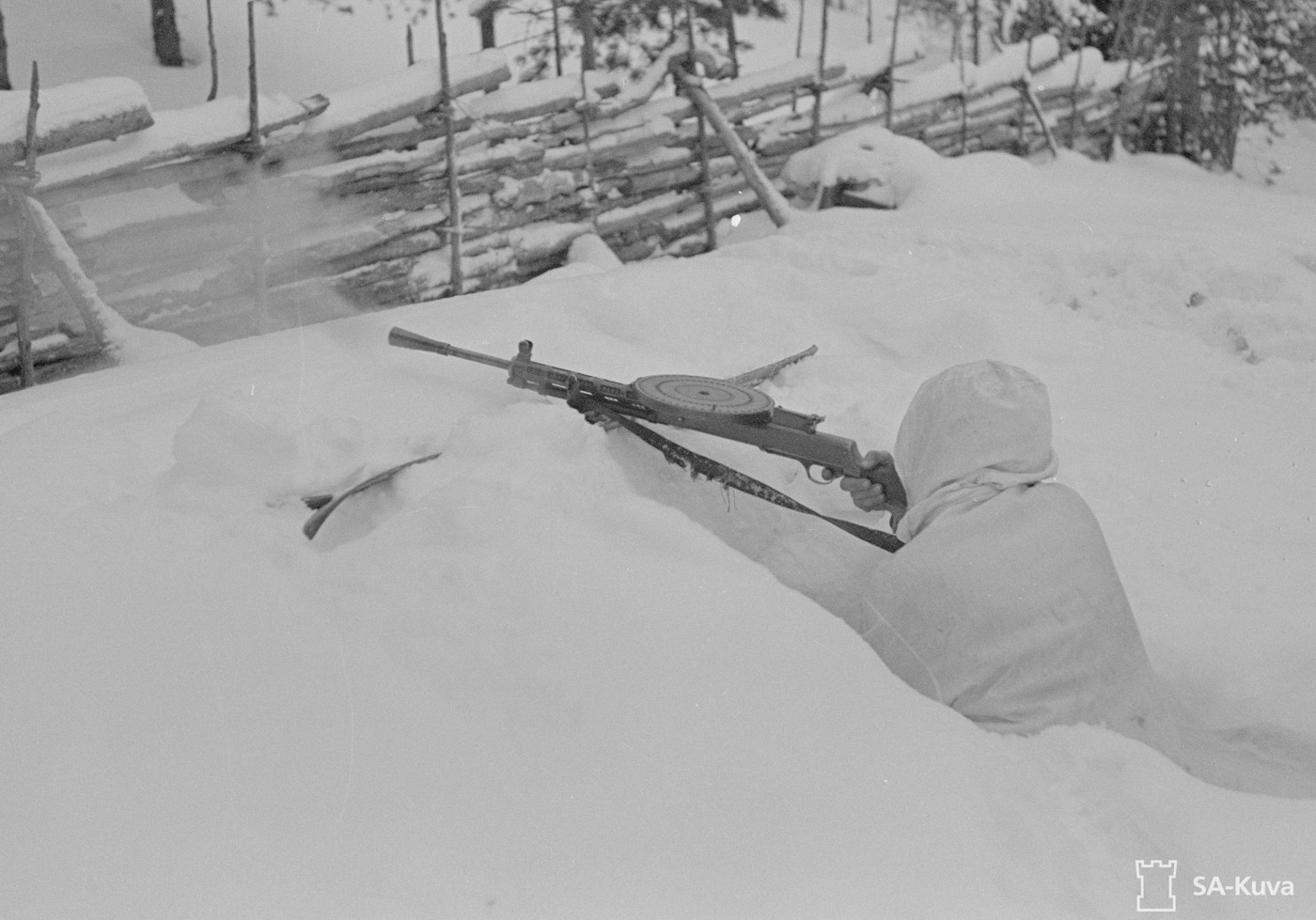
However, even before the Soviet Red Army had secured victory, it began to consider the need for a light machine gun — a concept that was then coming into its own. In 1921, Vasily Alekseyevich Degtyaryov — who actually headed the very first Soviet firearms design bureau — was tasked with developing such a weapon. Development continued through the 1920s, and a prototype was introduced in 1926.
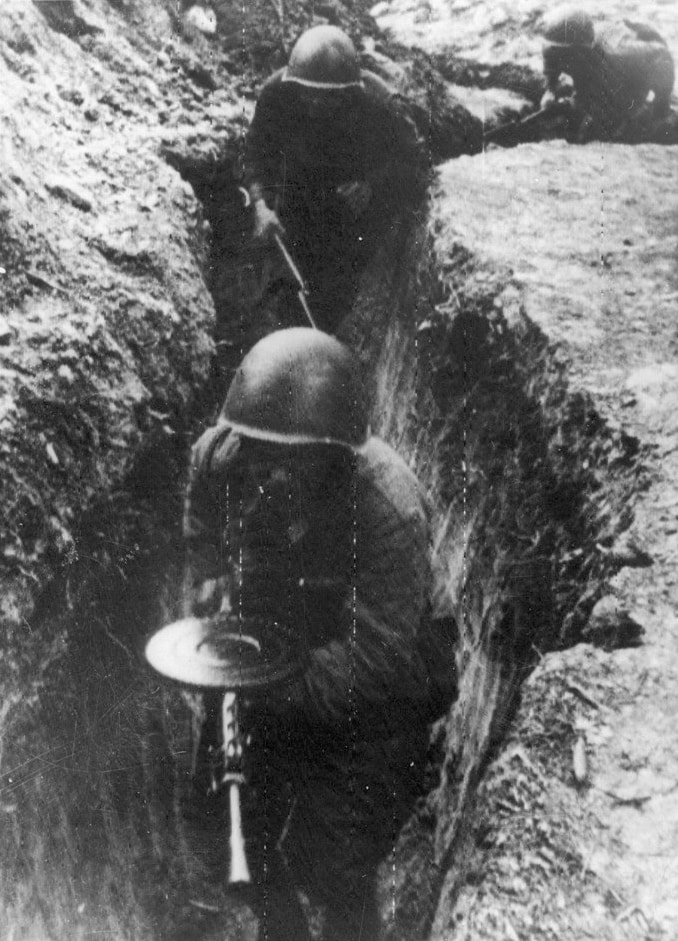
The Pulemyot Degtyaryova Pekhotny 1927 (Degtyaryov’s infantry machine gun 1927), as it became known, proved to be reliable, accurate and durable. It could be manhandled and still work like it was new from the factory, and it could endure freezing temperatures while continuing to lay down fire. It was chambered for the 7.62x54mmR cartridge, the same round used with the M1891 Mosin-Nagant bolt action rifle as well as the aforementioned PM-1910 water-cooled heavy machinegun.
Squad Assault Weapon
The DP-27 was a gas-operated weapon that was unique in that it was fed from a 47-round drum/pan magazine mounted on the top. Whether this was influenced by the American-designed Lewis Gun remains unclear, but the Lewis Gun was provided to Russian forces in the First World War.
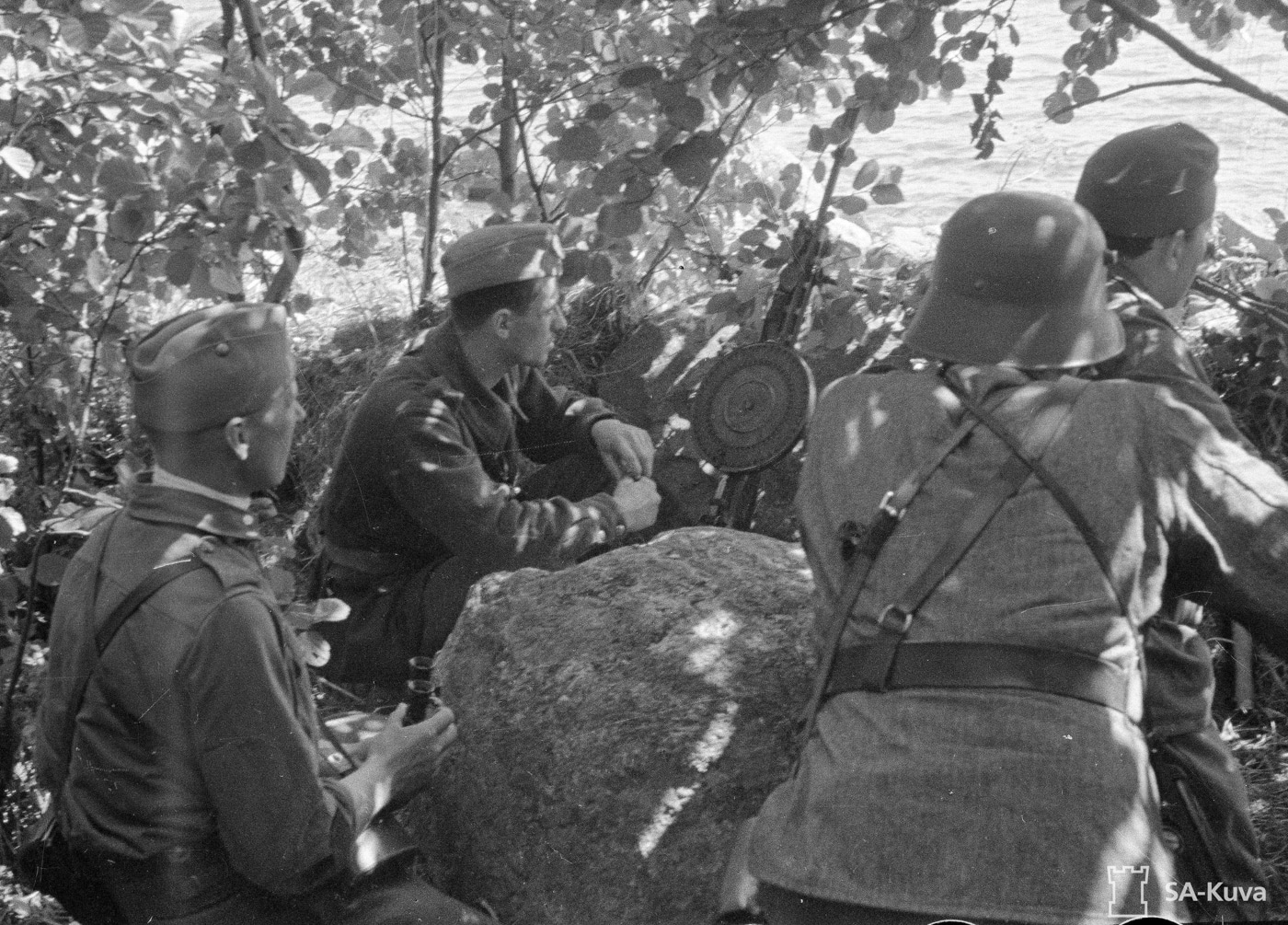
The pan magazine provided plenty of ammunition, while it also ensured that the line of sight over the weapon wasn’t obscured. Placing the feed on top of the weapon also provided the benefit of mobility that was lacking in belt-fed light machineguns of the era.
Moreover, it featured a bolt-locking system that was a simple adaptation of a Swedish invention in which two flaps were pushed out from the bolt by the movement of the firing pin. The DP-27, which employed a rifle-style stock, had only six working parts and was especially able to withstand dirt — so much so that Red Army soldiers were known to joke that it fired better if sand were thrown on it.
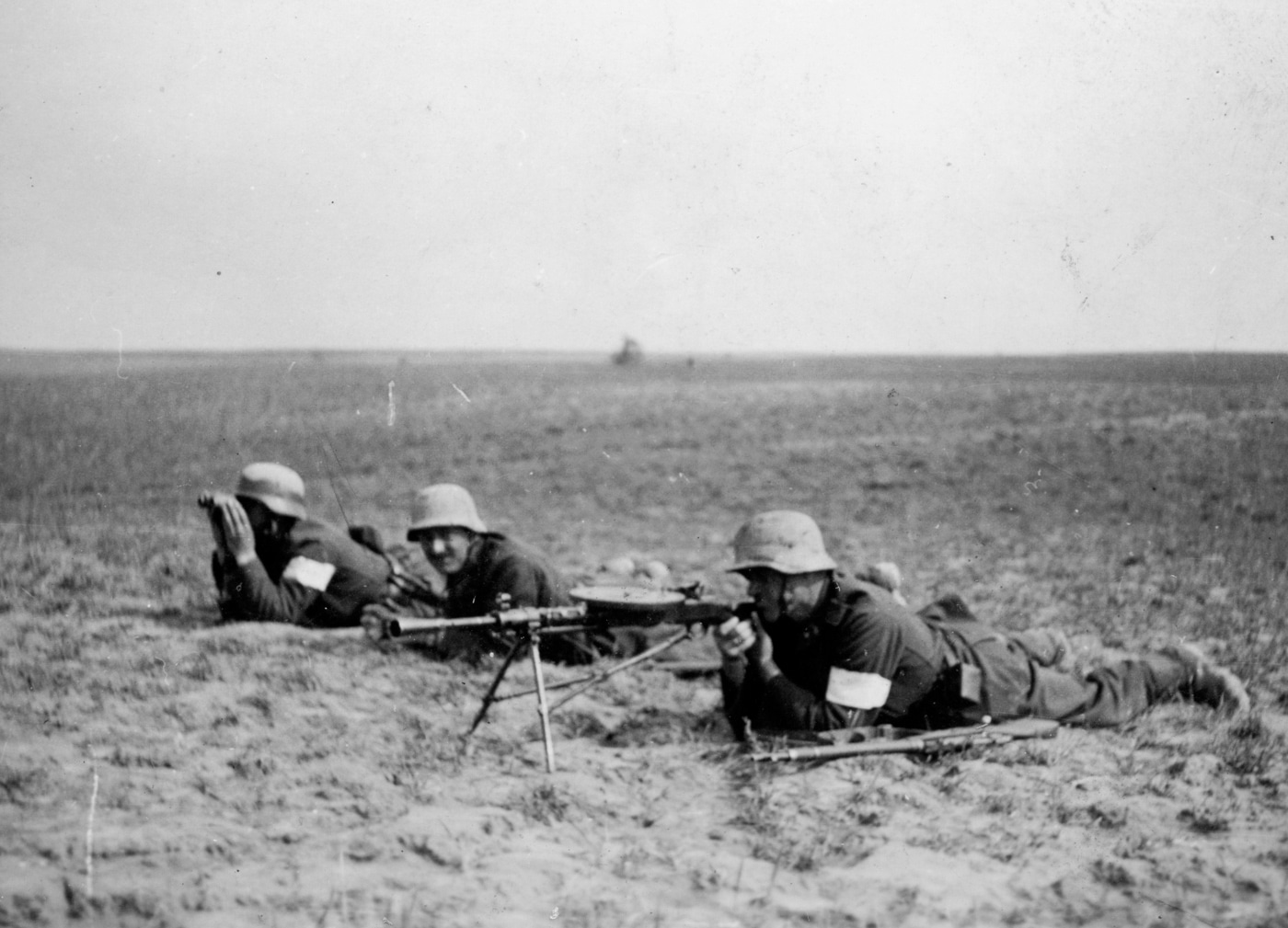
Early versions had 26 transverse cooling fins positioned on the barrel, but this proved to do little to actually cool it. Instead, the problem of excessive barrel heating was addressed with the introduction of a quick-change barrel mechanism. The DP-27 was also able to fire approximately 550 rounds per minute, a lower rate of fire than some machineguns of the era, a fact that actually helped reduce the risk of the barrel overheating.
Even with that particular shortcoming in combat situations, it filled the role of a squad light machinegun very well. If there was one problem, it was that the magazine proved to be a major detraction as it took a long time to change. They were also difficult to reload. In addition, the gun’s bipod was weak. And the DP-27 was very difficult, but not quite impossible, to fire from the hip. The operator could, in theory, hold the two legs of the bipod, but it was far from a pleasant experience. Holding the barrel shroud would simply result in burned fingers as the weapon heated up quickly when fired in full-automatic mode.
Baptism of Fire
By all accounts, the Kremlin was quite satisfied with the DP-27, but production was delayed until the early 1930s. The first real test of the firearms was thus in the Spanish Civil War, where the Soviets supplied it to the Republican forces and it quickly earned a reputation as a highly effective support weapon.
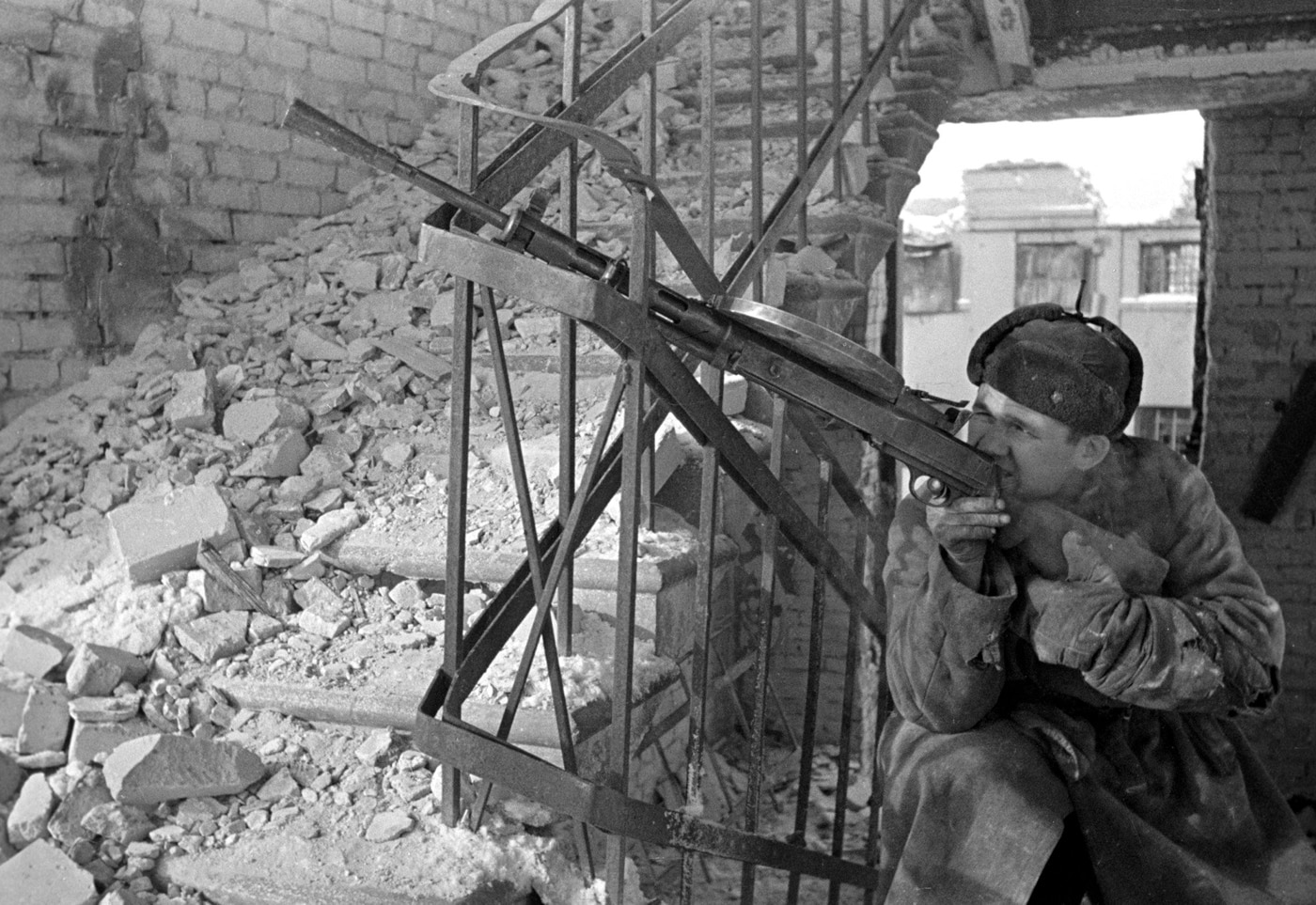
As Nazi Germany supported the Nationalists in Spain, it is almost certain that its arms designers would have had a chance to evaluate the weapon. Though it was reliable, it certainly wasn’t up to German engineering standards — and it could have been an example of Soviet military hardware that gave the German high command its overconfidence, especially as the Germans had recently introduced the excellent MG-34 general-purpose machine gun.
However, the DP-27 did go on to serve with the Red Army in the Winter War against Finland.
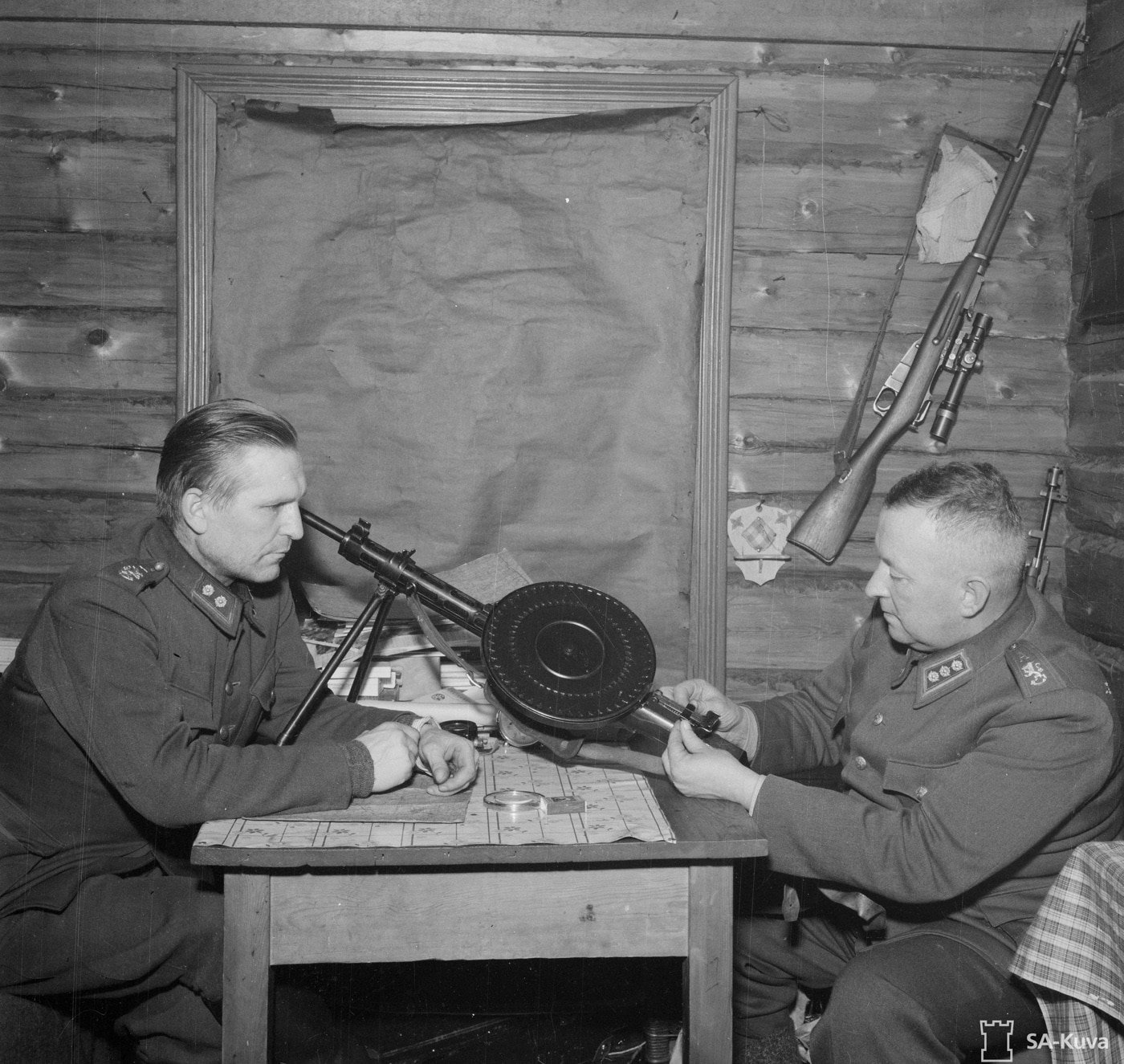
Thousands were captured and the weapon found favor with the Finnish Army, which used it in the Continuation War — where it actually replaced the domestically manufactured Lahti-Saloranta M/26 light machine gun. In Finnish service, the DP received the nickname “Emma” after a popular waltz as a play on its resemblance to a record player.
The German military also issued a large number of captured DP-27s to its Volksstrum forces, the late World War II German militia, where it was designated Leichtes Maschinengewehr 120(r).
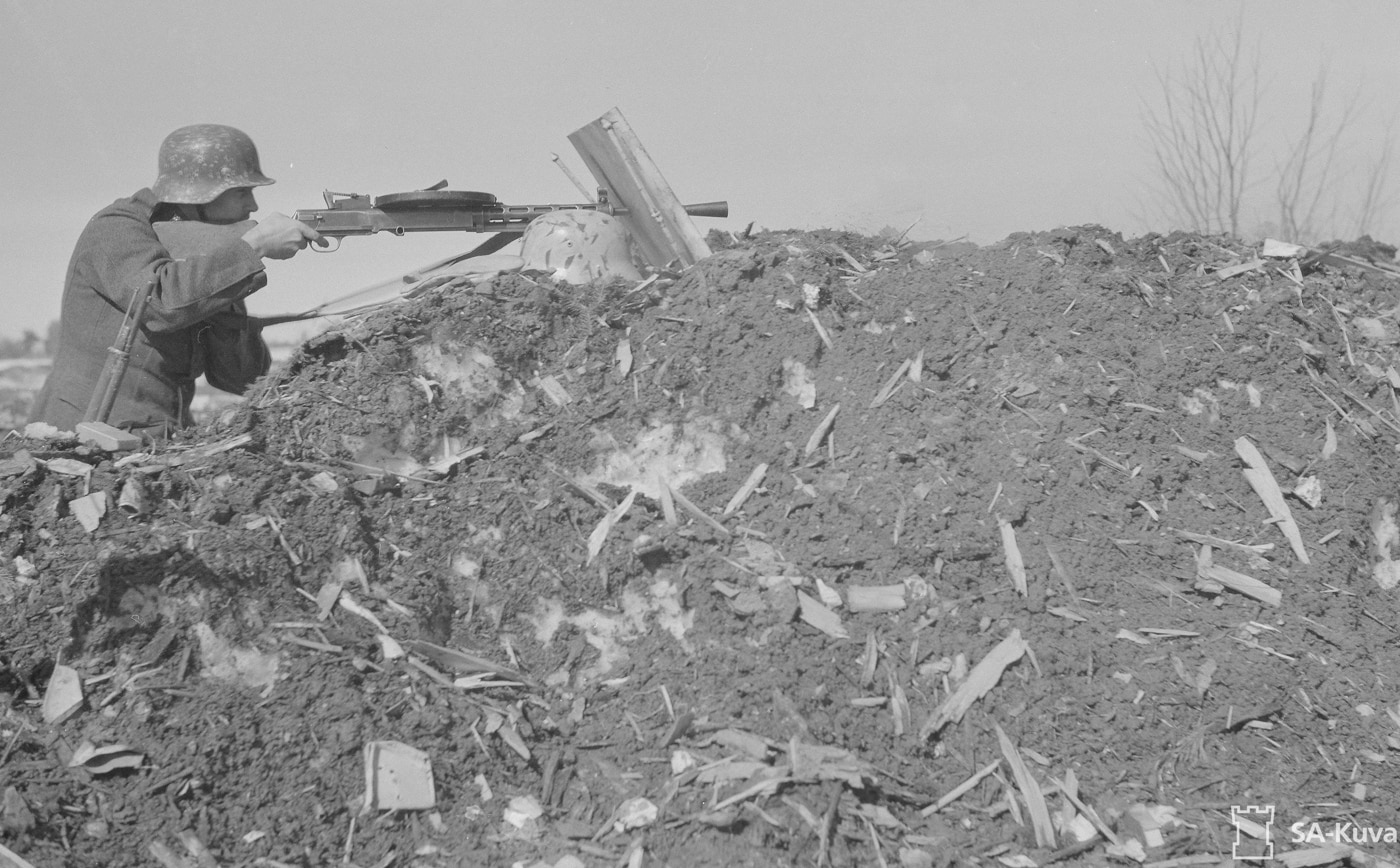
Through World War II, the Soviet Union supplied around 5,600 of the light machine guns to Chinese Nationalist forces. Those were used against the Japanese and then employed in a twist of irony against the Soviet-supported People’s Liberation Army (PLA) during the Chinese Civil War. As noted, the DP-27 was also employed by the North Korean Army and the Chinese Communists in the Korean War.
The Upgraded DPM
It was also during the Second World War that the Soviets sought to upgrade the weapon, and the result was the DPM (modernized). It was equipped with a more robust bipod fastened to the cooling jacket, while the recoil spring — which had proven problematic at times — was relocated to the tube at the rear of the rear of the receiver. This negated the problem of recoil-spring heating, but it required a redesign of the stock and a pistol grip was introduced. The DPM was copied by the Chinese PLA as the Type 53 light machine gun.
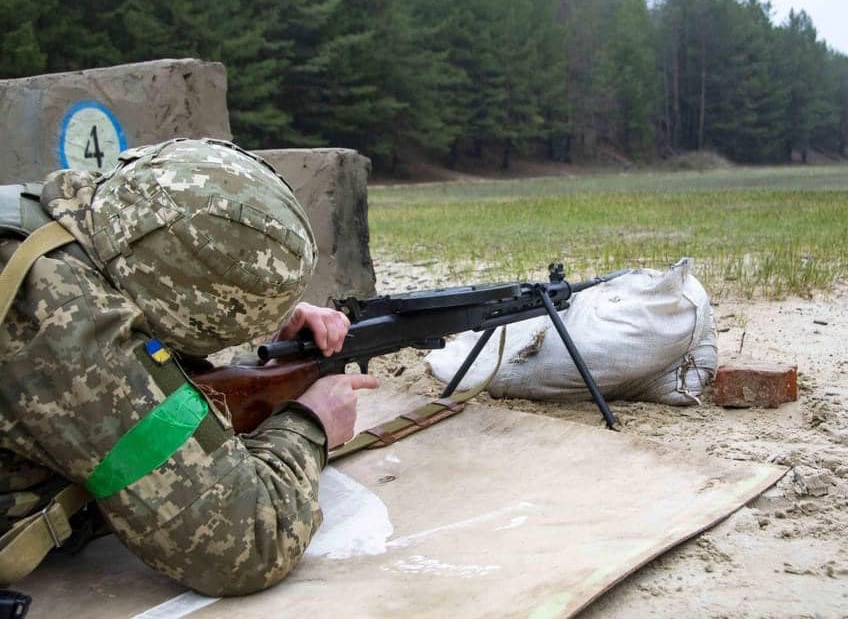
Both the DP-27 and DPM were also sent to aid the Viet Minh during the First Indochina War, and then to the People’s Army of Vietnam (PAVN) and Viet Cong forces in the Second Indochina War (Vietnam War). More recently, DPMs have been employed by Taliban fighters in Afghanistan. Both DP-27s and DPMs have been used in small numbers in Ukraine.
Other Variants — DA and DT
There were two other variants of Degtyaryov’s infantry machine gun produced — the DA (Degtyaryov Aviatsionny), an aircraft machine gun; and the DT (Degtyaryov Tankovy), which became the standard Red Army tank machine gun of the Second World War.
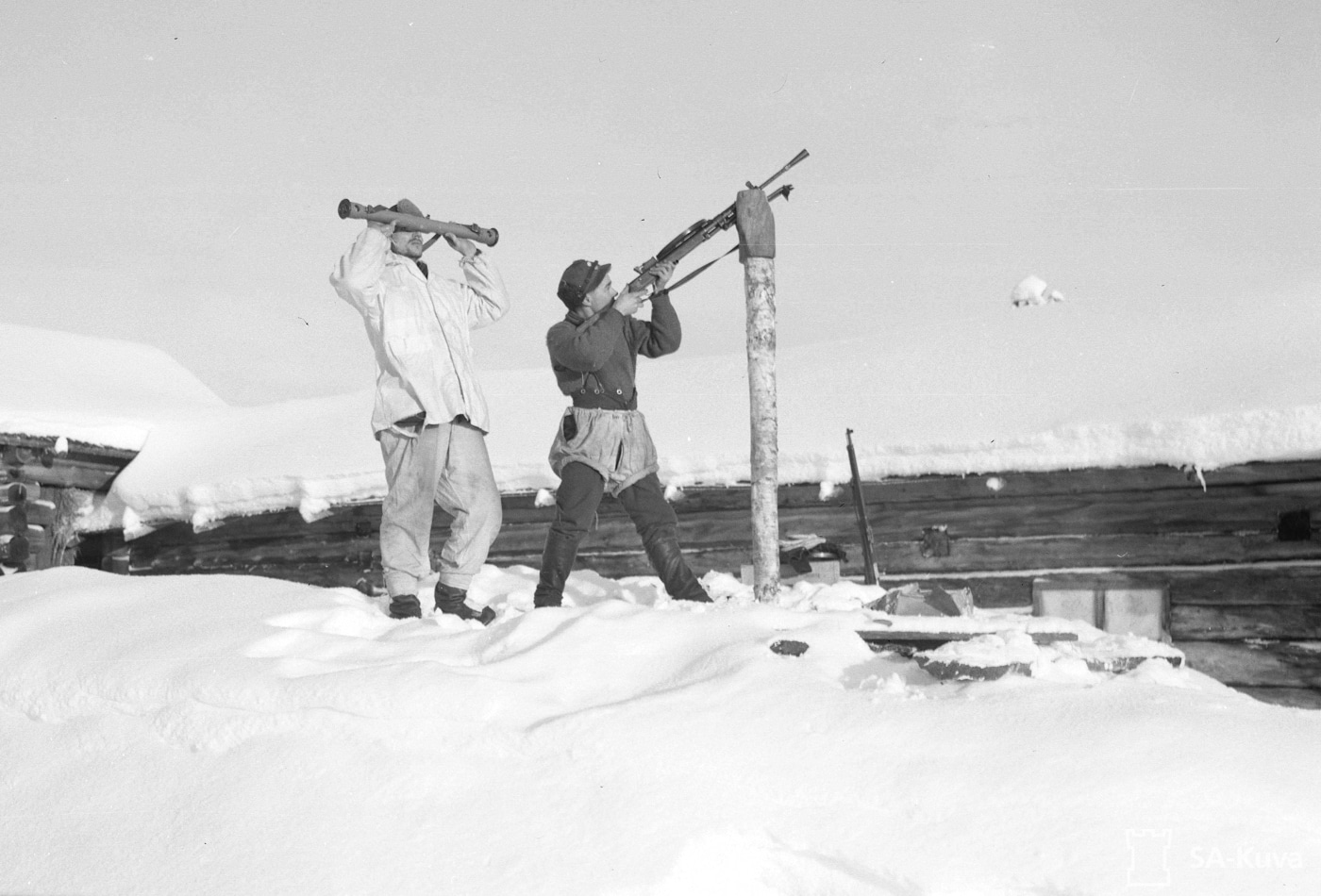
The DA was noted to be used in tandem mounts as the DA-2. It was first employed on the Tupolev TB-3 bomber and then in the Polikarpov R-5 and Polikarpov Po-2. Only about 1,200 were produced as it was superseded by the ShKAS, which offered a much higher rate of fire.
The DT’s ammunition capacity was increased via a 60-round pan magazine, which arranged the ammunition in three layers. That deepened the magazine but also reduced its diameter compared to the infantry type. The barrel was also heavier to reduce the frequency of barrel changes. Though the DT was primarily designed for use in a tank, it came with a separate kit to convert it for dismounted use, including if a tank became disabled and had to be abandoned. Due to shortages of machine guns in World War II, many DTs were issued directly to infantry units.
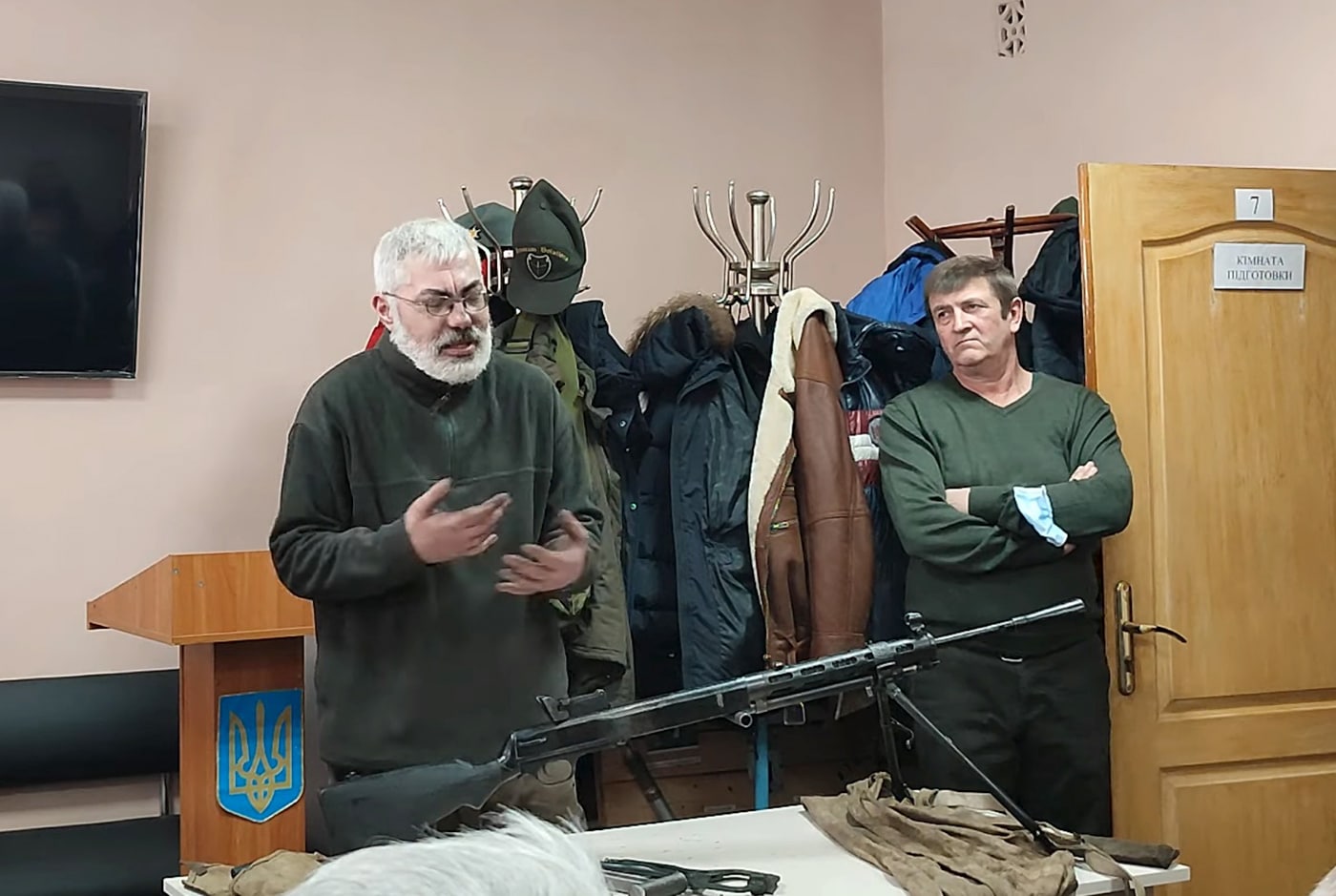
There was a final attempt after World War II to upgrade the DP-27 to a belt-fed light machine gun. The RP-46 (Rotnyi Pulemet 1946; Company level machine gun model 1946) was also fitted with a heavier barrel and it could fire upwards of 500 rounds between barrel changes. It was also manufactured in China as the Type 58 and in North Korea as the Type 64.
The RP-46 eventually led to the development of the Cold War-era RPD (Ruchnoy Pulemyot Degtyaryova; Degtyaryov hand-held machine gun), a weapon that chambered for the newer intermediate 7.62x39mm cartridge.
However, it is the DP-27 that remains the iconic Soviet Red Army light machine gun of the Second World War.
Editor’s Note: Please be sure to check out The Armory Life Forum, where you can comment about our daily articles, as well as just talk guns and gear. Click the “Go To Forum Thread” link below to jump in and discuss this article and much more!
Join the Discussion
Continue Reading
Did you enjoy this article?

 80
80






